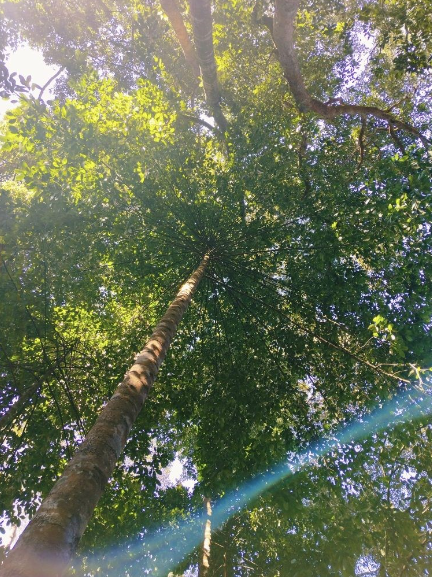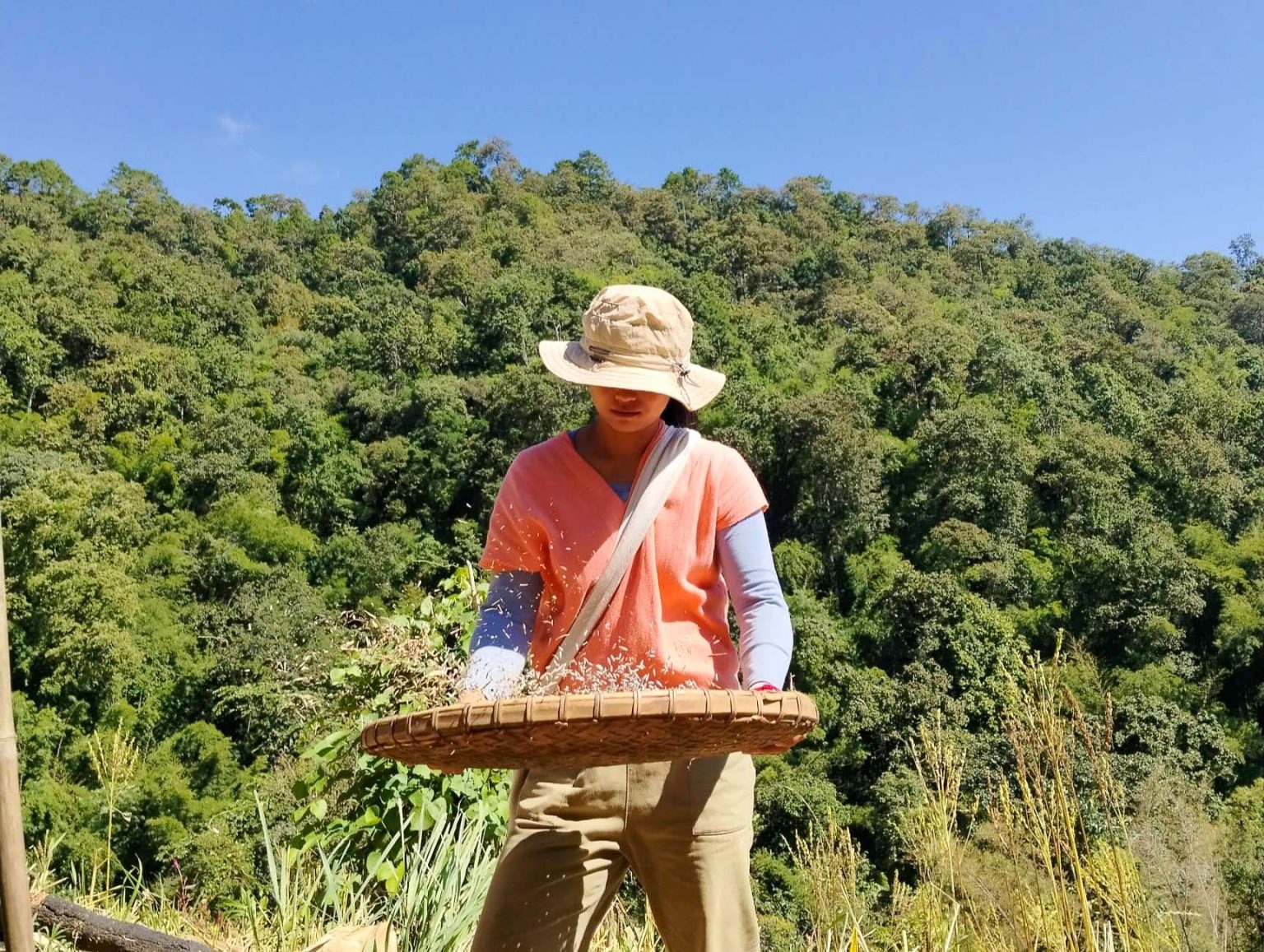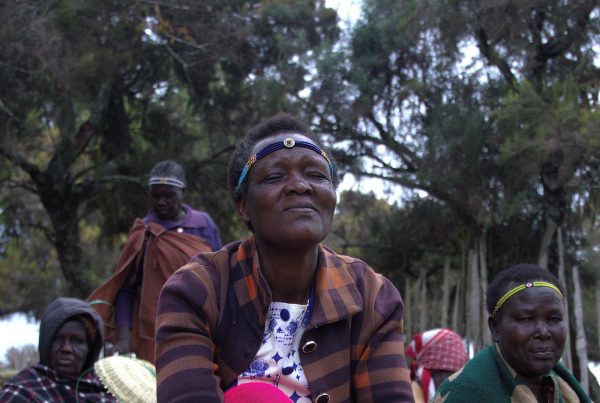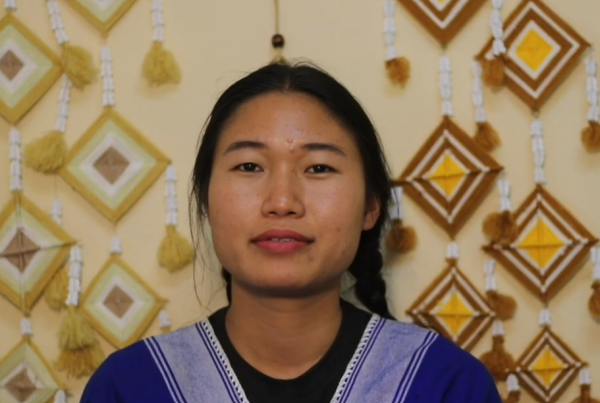We have all heard stories about the umbilical forest. Right? Maybe I’ve never even heard of it; maybe I’ve heard of it, but I don’t know the true meaning, or I don’t know the depth of what the word umbilical forest is, and I am one of them. However, I have understood by getting into the field in Ban Huay Hin Lad Nai community in Chiang Rai province; it is only a small community of about 22 households of the Pgakenyaw people who have a good connection with the forest.
The beginning of umbilical forestry that I myself never knew about. It may be both the ancient belief and the conservation of the forests of the Pgakenyaw people.
Hanging the bamboo containing an umbilical cord of a new born baby on the tree is a stratagem of Pgakenyaw people from the long past for forest conservation. I may still have little narrative experience that might make a joke, but I had a chance to discuss with an uncle who owns the house I stayed. uncle Niwet told me…:
“On forest conservation, if we have a million people and a million trees, when some people fell some trees, they have to replant them in return to the owners. Everyone needs to have the trees of their own.”
Type: Article
Region: Asia
Country: Thailand
Theme: Traditional and local knowledge and Land and resource rights
Partner: Inter Mountain Peoples Education and Culture in Thailand Association (IMPECT)
Author: Janjira Phamonwijit (La) from Indigenous Media Youth.

This statement is the one I really like. I’ve never thought about these things before. I can only think about what it takes to conserve the forest; I can only think and think, but this statement alone made me understand. Indeed, the person who loves the forest is someone who can live with the forest, make use of the forest and never think about destroying it.
To make an umbilical forest of the babies, it is to bring the umbilical cord from a mother who just delivered the child and hang it in a bamboo tube to the tree. One brother said and believe that:
“The umbilical cord, when in the womb, it is the relationship between mother and child, but when it is hung on the tree, it is the relationship between a person and the forest forever. Forest means many things for life; and it is the medicine for people too.”
These are the words of sister Dao Jai, the new generation of youth in the community, who is considered an important person to the future to pass on the indigenous knowledge to the younger generation. In addition, to tie a child’s umbilical cord to a tree is not just to any tree, but one has to choose a tree that can bear edible fruits, if not for people, it can be for animals. Choosing a tree to tie, one must be prepared before the child is born as to make a reserved tree. After birth, the baby’s umbilical cord in a bamboo tube is taken to tie on the selected tree. At first, I thought the umbilical cord is tied directly to the tree; so, I talked to myself, ‘If the umbilical cord is tied to the tree, wouldn’t it get rotten eventually?’ Then I asked sister Dao Jai what people do with umbilical cord, whether they bury it, but if they do that no one will see it. She said, “The umbilical cord is wrapped up in the white cloth and place in a bamboo tube and tie them to the tree.” I understand, but still regret that there is no demonstration on this. I told sister Dao Jai, “It’s unfortunate that I cannot observe the hanging of umbilical cord in action. Otherwise, I can imagine how it looks like.”
The conspicuous feature of umbilical forest at Huay Hin Lad Nai community may or may not be different from other Pgakenyaw communities, I do not know. Here, community leaders have explained the importance of umbilical cord to the hospital staff and they allow our people to bring umbilical cord of a new born baby back to their community. Initially, we were not allowed to bring umbilical cord from the hospital back to the community, but after both the doctors and nurses learned about our customary practice and belief, they gave permission to maintain our tradition to do so.
Sister Dao Jai said, “Presently, doctors come from their hospital to visit our community and they learned about the forest. They also started a research work in order to understand our community culture. Because they believe that umbilical cord is dirty and unhygienic, but when time passed, they eventually understand the idea of umbilical forest. Then the doctors granted permission for us to take the umbilical cord back home for ceremonial purpose; and they also come to visit our umbilical forest and found interesting indigenous philosophy for forest conservation. Thus, the forest will stay with us all the time if we know how to take good care of the forest.” She added, “I believe we will always have very good breathing everyday and eternally if we can conserve the forest at all time.”
This story was originally published on IMPECT’s website.



